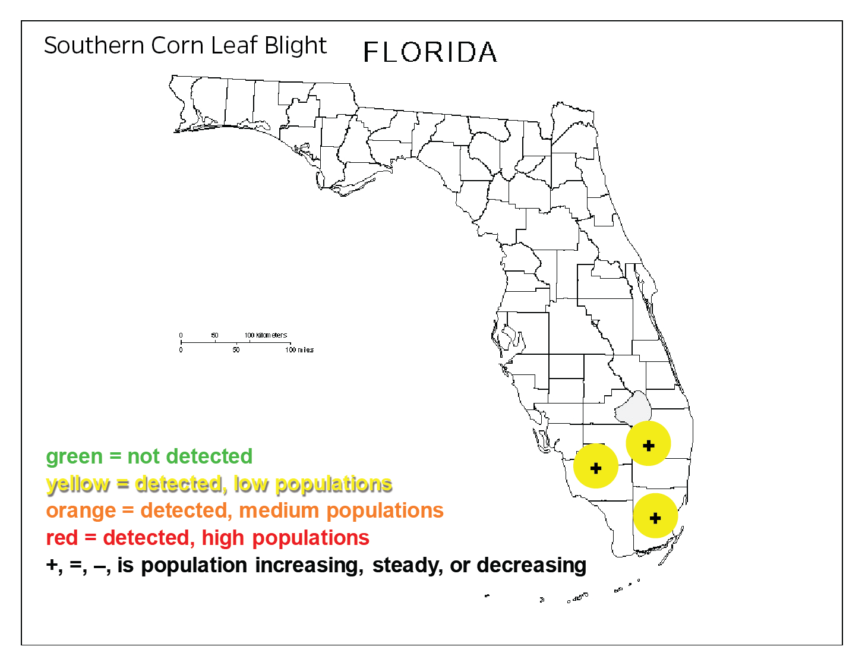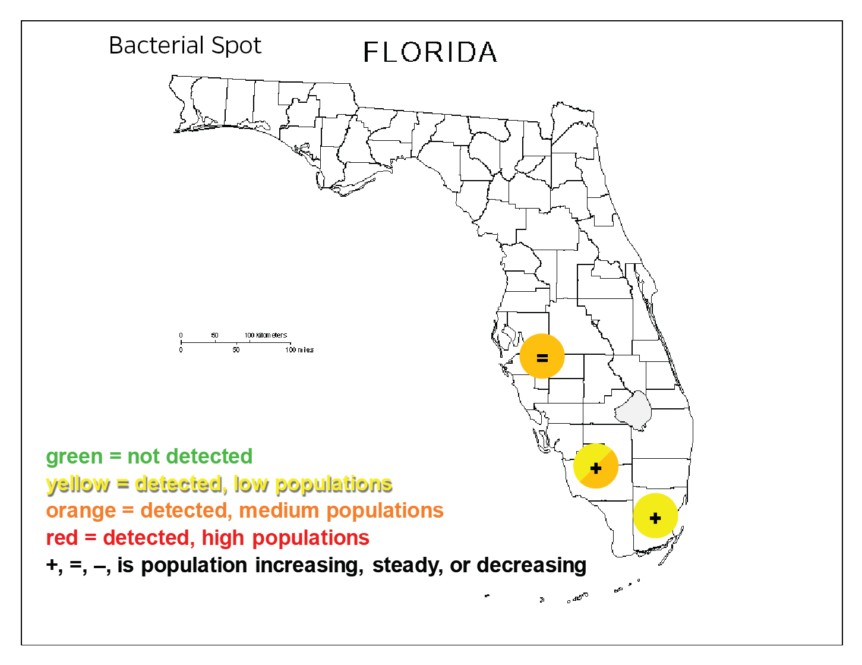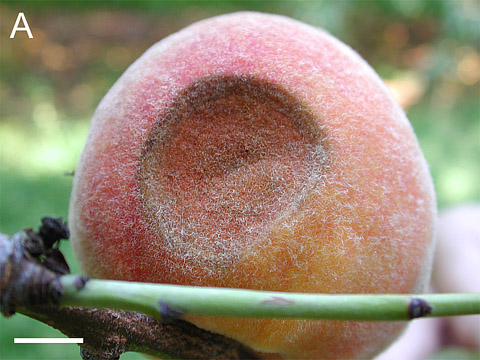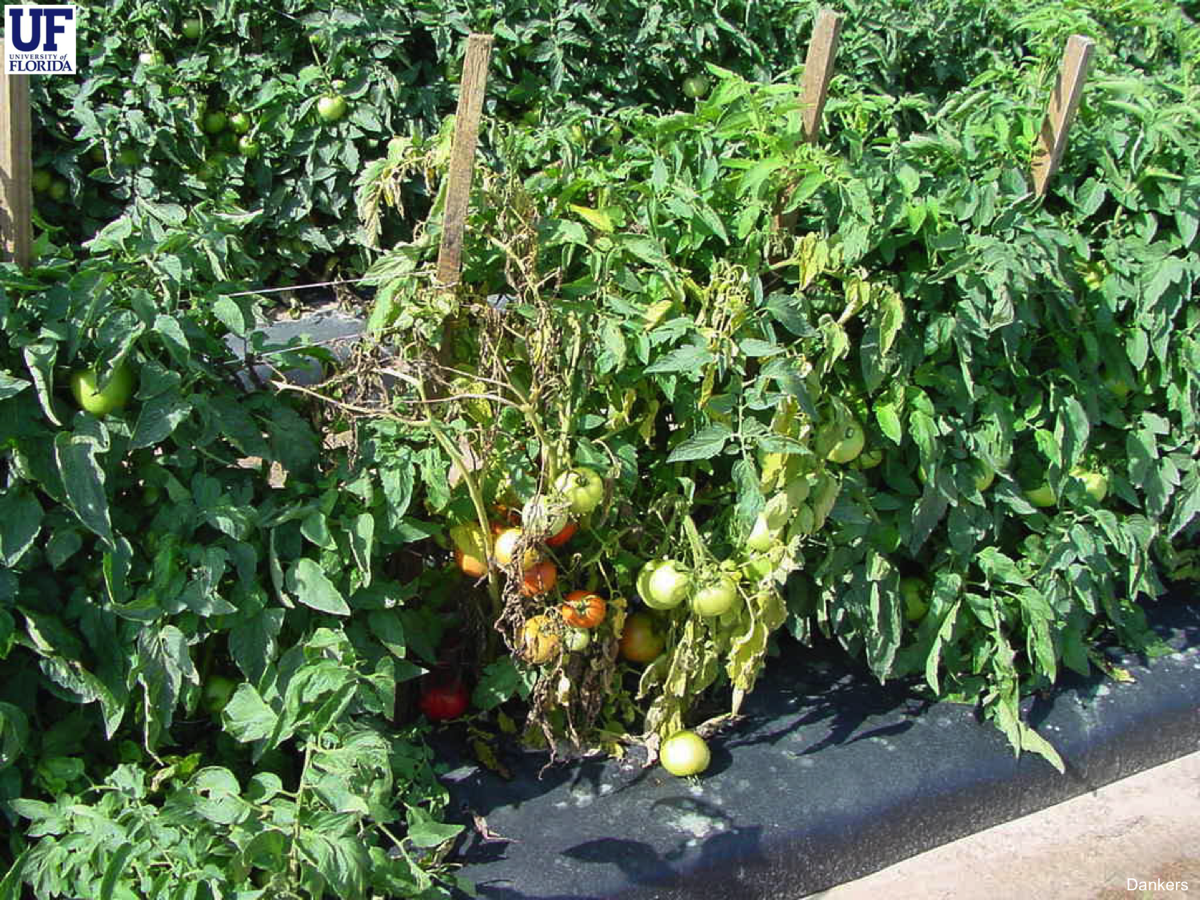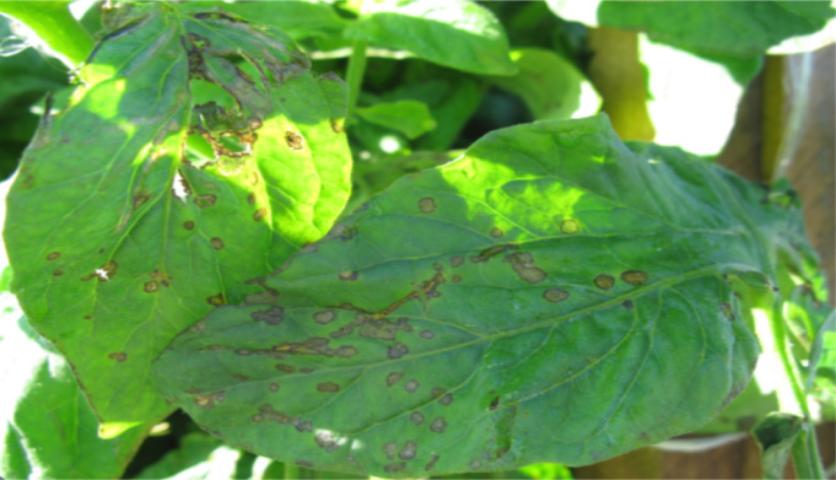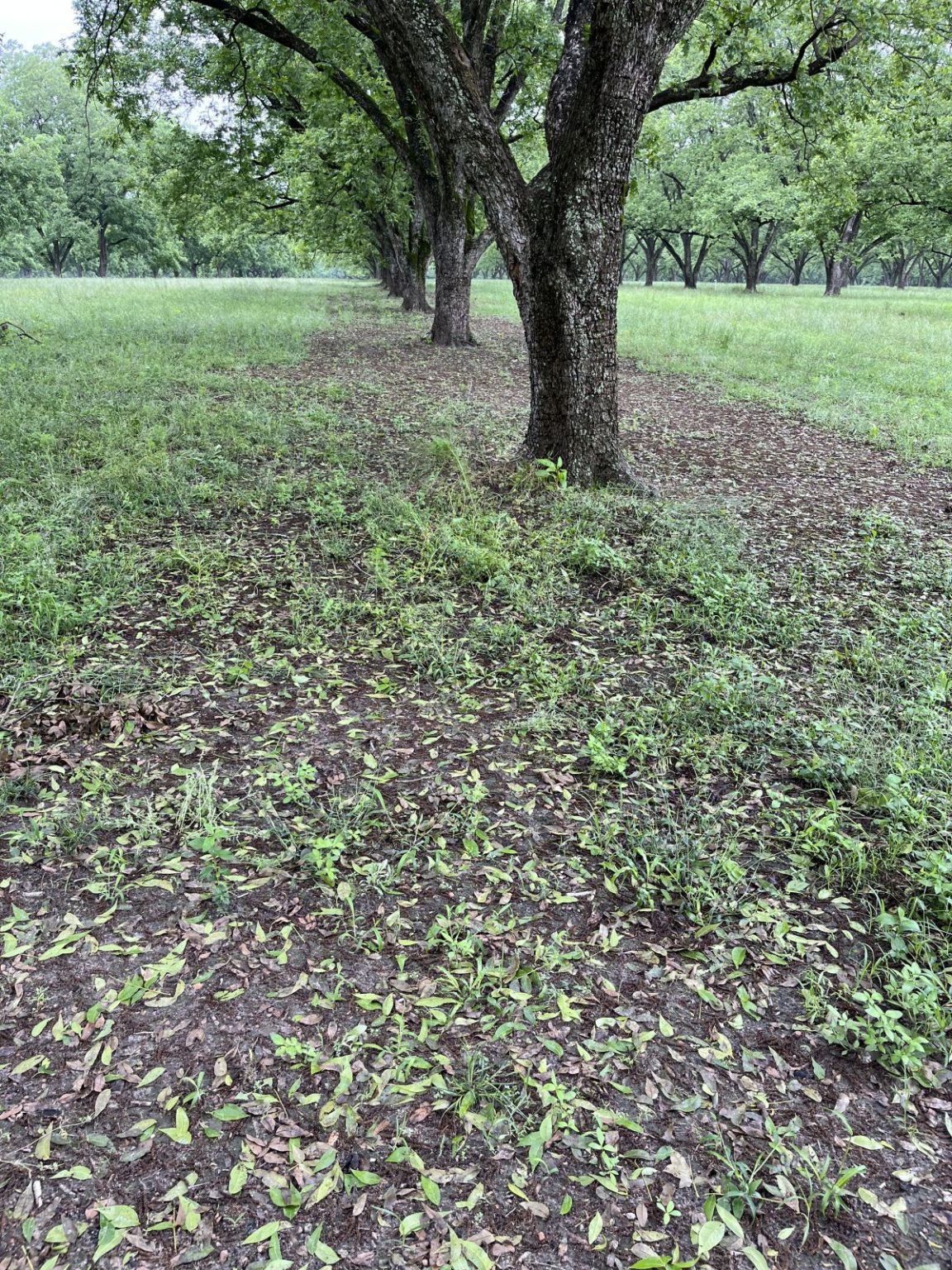Corn growers in southern Florida should be wary that Southern corn leaf blight disease is on the rise, according to the South Florida Pest and Disease Hotline. The disease is starting to appear in the Everglades Agricultural Area. Incidences are low but increasing in corn. Low levels of southern corn leaf blight were reported in a few fields in Southwest …
South Florida Pest and Disease Hotline: Bacterial Spot Disease on Rise
Bacterial spot disease is on the rise in plantings in southern Florida, according to the South Florida Pest and Disease Hotline. Moderate levels of bacterial spot were reported in older plantings in central Florida. There have also been increases in bacterial spot, mostly on tomato crops, but also on susceptible pepper varieties in southwest Florida. Overall levels are normal or …
Anthracnose Disease a Growing Concern for Peach Producers
By Clint Thompson Anthracnose disease is on the rise in peaches in the Southeast. University of Georgia researchers are determined to find out why. Phil Brannen, University of Georgia Cooperative Extension fruit disease specialist, is wary that fungicide resistance is a culprit as to why disease instances have increased in recent years. “I fear, and it’s something we need to …
New Fusarium Wilt Race a Concern for Florida Tomatoes
By Clint Thompson Florida tomato growers have a new concern with plant disease management this year. “The big news that we have right now is that we’ve identified a new race of fusarium wilt on tomato that appears to overcome a lot of our sources of resistance that are currently deployed. I’m just trying to get the word out to …
Tomato Producers Should be Wary of Fungicide Application
By Clint Thompson Tomato producers applying fungicides should be wary the management tactic could exacerbate bacterial spot disease. Gary Vallad, professor of plant pathology at the University of Florida Institute of Food and Agricultural Sciences (UF/IFAS) Gulf Coast Research and Education Center, spoke at the Florida Tomato Conference in LaBelle, Florida, last week. He cautioned growers to consider the spray applications they …
Bacterial Spot in Tomatoes: Too Much Fungicide Sprays Can Make Problem Worse
By Clint Thompson Tomato producers applying fungicides should be wary the management tactic could exacerbate bacterial spot disease. Gary Vallad, professor of plant pathology at the University of Florida Institute of Food and Agricultural Sciences (UF/IFAS) Gulf Coast Research and Education Center, spoke at the Florida Tomato Conference in LaBelle, Florida, last week. He cautioned growers to consider the spray …
Better Watch Out: Neopestalotiopsis Still a Concern for Florida Strawberry Growers
By Clint Thompson Florida strawberry growers are on the brink of planting this season’s crop. One University of Florida Institute of Food and Agricultural Sciences (UF/IFAS) expert is cautioning producers about disease control. One disease specifically comes to mind, says Natalia Peres, professor of plant pathology at the UF/IFAS Gulf Coast Research and Education Center. “I think Neopestalotiopsis is still …
Improved Fungicides Aiding Pecan Producers Against Scab Disease
By Clint Thompson The wettest summer in 20 years has made scab disease control essential for pecan producers in the Southeast. Lenny Wells, University of Georgia Extension pecan specialist, believes the crop would be impacted more if not for the improved fungicides available to growers. “This is one of the wettest summers I can recall. Probably the worst years I …
Fungal Pathogen Impacting Primarily Stuart Pecan Variety
By Clint Thompson University of Georgia (UGA) Extension pecan specialist Lenny Wells cautions growers about a fungal pathogen that primarily affects Stuart varieties. Wells noted in the UGA Extension Pecan Blog about leaf drop that is associated with a dying or browning of the terminal leaflets of compound leaves which progresses backward toward the base of the leaf. It eventually …
Leaf Rust Problematic for Florida Blueberry Growers
By Clint Thompson Leaf rust disease has always been a problem for Florida blueberry growers. But that concern has only magnified with producers transferring to an evergreen production system. Phil Harmon, professor and Extension plant pathologist at the University of Florida Institute of Food and Agricultural Sciences (UF/IFAS), discusses the issue growers are facing with this familiar problem. “Here recently, …










